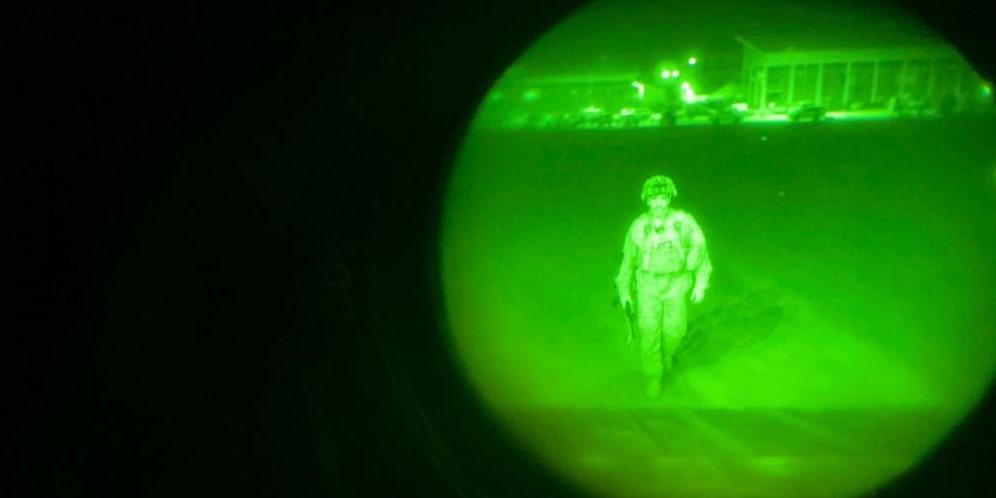The Arduous, Costly War in Afghanistan Ends
Yesterday, the Pentagon announced the end to the nearly 20-year mission in Afghanistan that started shortly after the terrorist attacks in America on September 11th, 2001. The U.S. military completed its evacuations from Hamid Karzai International Airport in Kabul under active threat from the Taliban and ISIS terrorists, following the August 15 collapse of the Afghanistan government and the August 26 attack that killed 13 U.S. warfighters and 60 Afghanistan citizens. Gen. Frank McKenzie, USMC, commander of U.S. Central Command, called it a costly war.
“It's a mission that brought Osama bin Laden to a just end along with many of his Al-Qaida co-conspirators, and it was not--it was a not a cheap mission,” he said. “The cost was 2,461 U.S. service members and civilians killed and more than 20,000 who were injured. Sadly, that includes 13 U.S. service members who were killed last week by an ISIS-K suicide bomber. We honor their sacrifice today as we remember their heroic accomplishments.” In addition to the lives impacted or lost, the United States spent a trillion dollars training and equipping hundreds of thousands of Afghan National Security and Defense Forces, according to the White House.
Gen. McKenzie stressed that any additional requests of U.S. citizens and eligible Afghans who wanted to leave Afghanistan would be handled through diplomatic means and the U.S. State Department. He praised the U.S. military’s and coalition partners’ work in quickly moving out almost 80,000 people since mid-August.
“Over an 18-day period, since August 14, U.S. military aircraft have evacuated more than 79,000 civilians from Hamid Karzai International Airport,” he said. “That includes 6,000 Americans and more than 73,500 third-country nationals and Afghan civilians. In total, U.S. and coalition aircraft combine to evacuate more than 123,000 civilians, which were all enabled by U.S. military service members securing and operating the airfield. On average, we have evacuated more than 7,500 civilians per day over the 18 days of the mission, which includes 16 full days of evacuations, and more than 19,000 on a single day. These numbers do not include the roughly 5,000 service members and their equipment that were sent to Afghanistan to secure the airfield and who will withdraw on the conclusion of our mission.”
He emphasized that the Taliban shifted its stance, creating a hostile environment after the fall of Kabul. “We had gone from cooperating on security with a longtime partner and ally to initiating a pragmatic relationship of necessity with a longtime enemy,” Gen. McKenzie explained. “And to that environment, Rear Adm. Pete Vasely [USN, commander of Special Operations Joint Task Force–Afghanistan and NATO Special Operations Component Command–Afghanistan] and Brig. Gen. Farrell Sullivan of the Marines [commander, Naval Amphibious Forces], and subsequently Maj. Gen. Chris Donahue of the Army's 82nd Airborne Division, deployed and employed their forces and did extraordinary work with the leading elements or reinforcement package to safely close the embassy in a period of darkness one evening, to establish a deconfliction mechanism with the Taliban, to establish security at the airport, and to bring in the rest of our reinforcements into the airport. They accomplished this difficult list of tasks within 48 hours of supporting the transfer of the embassy to the airport.”
Defense Secretary Lloyd Austin remarked on the U.S. military’s considerable effort, especially in the last couple of days. “Our service members secured, defended and ran a major international airport,” he stated. “They learned how to help consular officers screen and verify visa applicants. They provided medical care, food and water, and compassion to people in need. They flew tens of thousands of people to safety, virtually around the clock. They even delivered babies. No other military in the world could accomplish what we and our allies and partners did in such a short span of time. That is a testament not only to our forces’ capabilities and courage but also to our relationships and the capabilities of our allies and partners. Over the course of more than four decades in service, I have never ceased to be amazed at what an American service member can do. I remain in awe. And I am thankful for the skill and professionalism with which they do it.”
In February 2020, former President Donald Trump’s administration negotiated with the Taliban, agreeing to a U.S. military withdrawal by May 1, 2021, along with the release of about 5,000 imprisoned Taliban forces. On January 15, the Pentagon announced that 2,500 U.S. forces were in Afghanistan, down from 13,500 and at the lowest levels in country since 2001. President Joe Biden kept the drawdown commitment, albeit pushing the deadline to August 31, not expecting the rapid fall of the Afghan government.
“I was not going to extend this forever war, and I was not extending a forever exit,” the president said today.
He noted that the military’s top leaders, the Joint Chiefs of Staff and commanders on the ground in Afghanistan “unanimously recommended” to end the evacuation and withdrawal by August 31 as planned. “Their view was that ending our military mission was the best way to protect the lives of our troops and secure the prospects of civilian departures for those who want to leave Afghanistan in the weeks and months ahead,” President Biden stated.
“I would like to offer my personal appreciation to the more than 800,000 service members and 25,000 civilians who have served in Afghanistan, and particularly to the families of those whose loved ones have been lost or wounded,” Gen. McKenzie said. “Your service, as well as that of your comrades and family members, will never be forgotten. No words could possibly capture the full measure of sacrifices and accomplishments of those who served, nor the emotions they're feeling at this moment, but I will say that I'm proud that both my son and I have been a part of it.”





Comments